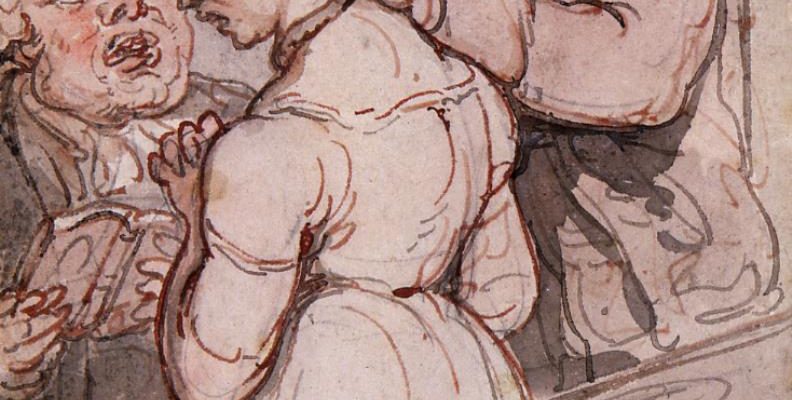As gruesome and unsavoury as the idea of a public hanging may appear today, the execution of criminals in the eighteenth century could be a time for spectacle and revelry. In York hangings often took place on race days, with York Tyburn being located conveniently next to the Knavesmire. Hangings took place in York around 3 or 4 times a year, peaking 1746 when over 20 people were hung following the Jacobite rebellion.
On the day of execution the condemned prisoner would be driven from York Castle to Tyburn, sitting alongside their coffins. The journey took them through crowd ridden streets over Ouse Bridge, up the steep slope of Micklegate and on to the Mount. The atmosphere amongst the crowds was often bawdy and carnivalesque, with the condemned sometimes being given drinks along the way. The gallows consisted of a wooden triangle standing on three wooden pillars – known as the ‘Three Legged Mare’. Here the spectacle reached its pinnacle, with the condemned being read their last rites and often giving a short speech to the crowd.
The ‘entertainment’ did not necessarily conclude at this point. Monopolising on the interest of the crowd, the body of the deceased would often be placed on public display. The famous highwayman Dick Turpin, for example, had his body laid out at the Blue Boar Inn on Castlegate, where it attracted a crowd of curious onlookers. Similarly, following her execution in 1809, the murderess Mary Bateman, known as the ‘Yorkshire Witch’, had her body placed on display at Leeds General Infirmary where over 250 people paid 3d to view her corpse. More gruesomely, her skin was later tanned and sold in small pieces as souvenirs.
The crimes of those executed were also often reported with relish in the press, whilst the most infamous would have their biographies sensationalised and sold in pamphlets, on broadsheets and even recalled in poetry and ballads. Such works invariably focused on the criminal’s early life and their crimes, as well as offering a detailed account of the trial. Most crucial of all was their behaviour just before death. An account of Dick Turpin’s death in the York Courant on 7 April 1739 described his bravado in the face of certain death, describing how he ‘with undaunted courage looked about him, and after speaking a few words to the topmans, he threw himself off the ladder and expired in about five minutes’. The popular myth of the criminal antihero, created in large part through publications and newspaper reports, only further fuelled interest in public executions. However, at York, in a bid to eliminate the raucous crowds, it was decided in 1801 to move the gallows to the York Castle so that the ‘entrance to the town should no longer be annoyed by dragging criminals through the streets’.

Source: In Pursuit of Pleasure: Entertaining Georgian Polite Society (Fairfax House, 2016)
